Bb2.7
The rongorongo texts should evidently be read against the backdrop of what
all could see in a cloudless night. After the Tail Fish (ika
hiku)
 |
39 |
 |
3 |
 |
26 |
 |
2 |
 |
|
Ba6-3 (210) |
Ba6-43 |
Ba7-3 (254) |
Ba7-30 |
Ba7-33 (284) |
|
45 |
30 |
a new upstart would arrive (tuu). The state of
sitting down indicated a low ceiling, but then, with more
room, one could stand up (tuu).
Noho. 1. To sit,
to stay, to remain, to live (somewhere), to wait;
ka-noho, you stay! (i.e. 'good-bye', said by the person
leaving). 2. Figuratively: he noho te eve, to be
calm, at peace; he noho te mana'u, to concentrate on
something, to fix one's attention on; ku-noho á te mana'u
o te tagata ki ruga ki te aga, the man thinks constantly
of his work. Vanaga. Seat, bench, dwelling, marriage,
position, posture, situation, session, sojourn; to sit, to
dwell, to reside, to rest, to halt, to inhabit;
noho hahatu, to sit
cross-legged; noho hakahaga,
apathy; noho heenua,
countryman; noho kaiga,
native; noho kenu,
married; noho ke noho ke,
to change place; noho muri,
to stay behind; noho noa,
invariable; noho opata,
to stand on a cliff; noho
pagaha, badly placed;
noho pepe, table;
noho tahaga,
bachelor, unmarried; noho
vie, married,
noho no, apathy, stay-at-home, colonist, idler,
inhabitant, inactive, immobile, settler, lazy, loiterer.
Hakanoho, to
abolish, to rent, to lease, to enslave, to dissuade, to
exclude, to exempt, to install, to substitute, hostage.
Hakanohohia,
stopped. Nohoga,
seat. Nohoturi,
to kneel, genuflexion.
Nohovaega, to preside. Churchill.
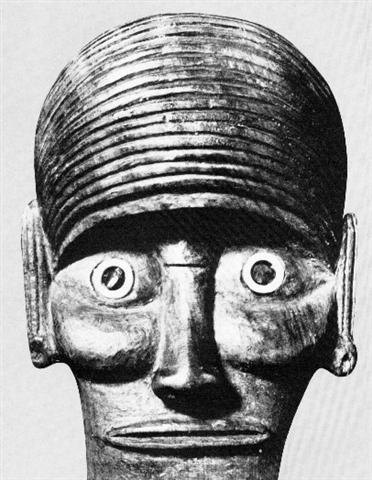

 |
 |
 |
 |
 |
 |
 |
|
(36 = 100 - 64) |
(421 + 37 = 458) |
Bb2-7 |
Bb2-8 (460) |
Bb2-9 |
Bb2-10 (462) |
Bb2-11 (42) |
|
e tagata
moe
mai |
ki te
marama etahi rua kokore |
ku ihi a mai -
ki te marama |
eaha te marama |
kua
moe te goe
ra |
ki te ika hiku
raverave |
|
Kore. To
lack, to be missing; without
(something normally expected),
-less; ana kore te úa, ina he vai
when rain lacks there is no
water: vî'e kenu kore, woman
without a husband, i.e. widowed or
abandoned by her husband. Vanaga.
Not, without (koe); e kore,
no, not; kore no, nothing,
zero; kore noa, never, none;
hakakore, to annul, to
nullify, to annihilate, to abrogate,
to acquit, to atone, to expiate, to
suppress, a grudge. T Pau.: kore,
not, without. Mgv.: kore,
nothing, not, without, deprived of;
akakore, to destroy, to
annihilate. Mq.: kore, koé,
óé, nothing, not, finished,
done, dead, destroyed, annihilated,
without. Ta.: ore, no, not,
without. Korega, nothing,
naught. Churchill.
Ihi. 1. Line
of singing women at a feast or an
êi. 2. Ihi, ihi-ihi,
to break up into small pieces, to
crumble, to tear to pieces;
he-ihi i te maúku, to separate
fibres. Vanaga. Ihiihi, to
hop. Churchill.
Goe. Milky
Way. Vanaga. |
|
VISIBLE CLOSE TO THE FULL MOON: |
|
FUM AL SAMAKAH (Mouth of the Fish)
=
β
Piscium
(348.3),
ζ
Gruis (348.5),
ο
Andromedae (348.9) |
Al Fargh al
Mukdim-24 (Fore Spout) /
Purva
Bhādrapadā-26 (First of the Blessed
Feet) /
House-13 (Pig)
SCHEAT PEGASI =
β
Pegasi,
π
Piscis Austrini (349.3),
κ
Gruis (349.4),
MARKAB PEGASI =
α Pegasi
(349.5)
*308.0 = *349.4 - *41.4 |
23h (350.0 = 167.4 + 182.6)
υ, θ Gruis (350.0), π Cephei
(350.6), ι Gruis (350.9) |
SIMMAH = γ Piscium
(351.7) |
φ Aquarii (352.0), ψ Aquarii
(352.4), χ Aquarii (352.6), γ
Tucanae (352.8) |
ο Cephei (353.3),
KERB (Bucket Rope) = τ Pegasi
(353.6) |
κ Piscium (354.2),
θ Piscium (354.4),
υ Pegasi (354.9)
*313.0 = *354.4 - *41.4 |
|
March 5 (428) |
6
(64) |
7
(365 + 65) |
8 |
9 |
10 |
11 |
|
DEC 30 (*284) |
31 (365) |
JAN 1 (430 - 64) |
2 |
3 |
4 |
5 |
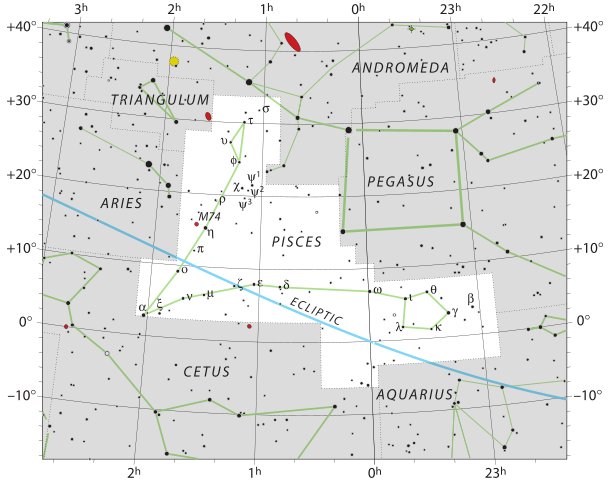 |
|
INVISIBLY CLOSE TO THE SUN: |
|
Sept 3 |
4 (64 + 183) |
5
(248) |
6 |
7 |
8 |
9 |
|
JULY 1 |
2 |
3
(248 - 64) |
4 (185) |
5
(3 + 183) |
6 |
7 |
|
ANA-TIPU-4
(Upper-side-pillar - where the
guards stood)
MERAK (Loin, not Lion) =
β
Ursae Majoris
(166.2),
DUBHE (Bear) =
α
Ursae Majoris
(166.7) |
11h (167.4)
χ
Leonis,
χ¹
Hydrae (167.1),
χ²
Hydrae (167.3)
*167.4 - *41.4 = *126.0 |
AL SHARAS (The
Ribs) =
β
Crateris
(168.6) |
Al Zubrah-9
(Mane) /
Purva
Phalguni-11 (First Reddish One - Fig
Tree)
ZOSMA (Girdle, not Belt) =
δ
Leonis
(169.2),
COXA (Hips) =
θ
Leonis (169.4)
*169.4 - *41.4 = *128.0 |
φ
Leonis (170.0),
ALULA
(First Spring of the Gazelle) =
ξ,
ν
Ursae Majoris
(170.5),
LABRUM =
δ
Crateris
(170.6) |
σ
Leonis (171.1),
λ
Crateris (171.6),
ι
Leonis,
ε
Crateris (171.9) |
γ
Crateris, π
Centauri (172.0),
κ
Crateris (172.5),
τ
Leonis (172.8)
GREDI (α Capricorni) |
 |
At glyph number 464
(= 16 * 29 →
256 → September 13) te moa
stood up (moe changed into moa):
 |
 |
 |
 |
 |
 |
 |
|
Bb2-12 |
Bb2-13 (465) |
Bb2-14 |
Bb2-15 |
Bb2-16 |
Bb2-17 |
Bb2-18 |
|
|
|
kua
tuu te moa |
i to ika - eaha te
ika ma te maitaki |
hokohuki |
ma te henua |
hokohuki |
ma te maitaki |
hokohuki ma te henua |
|
VISIBLE CLOSE TO THE FULL MOON: |
|
ο Gruis,
Snowball Nebula = NGC7662 Andromedae
(355.0), τ Oct. (355.3) |
No star listed |
ι Phoenicis (357.3),
ι Piscium (357.4),
λ Andromedae (357.9)
*316.0 = *357.4 - *41.4 |
λ Piscium (358.0),
MANUS CATENATA = ι Andromedae
(358.1),
θ Phoenicis,
ALRAI =
γ Cephei (358.4),
κ Andromedae (358.7)
*358.4 - *41.4 = *317.0 |
ω Aquarii (359.2),
78 Pegasi
(359.5) |
ψ Andromedae (360.1),
σ Phoenicis (360.4)
*360.4 - *41.4 = *319.0 |
γ¹ Oct.
(361.4), φ
Pegasi
(361.7)
*361.4 - *41.4 = *320.0 |
 |
|
March 12 (70) |
(465 - 29 = 436) |
3-14 (365 + 72) |
15
(365 / 5) |
16 |
17 (440) |
18 (81 + 360) |
|
JAN 6 |
7 |
8 |
9 |
10 |
11 |
12 (377) |
|
INVISIBLY CLOSE TO THE SUN: |
|
ο¹ Centauri (173.8) |
GIAUZAR = λ Draconis
(174.0), ξ Hydrae (174.3), ο² Centauri,
λ Centauri (174.8) |
θ
Crateris (175.0),
υ
Leonis (175.2),
ω
Virginis (175.3),
ι
Crateris (175.5) |
ο Hydrae (176.1) |
ζ Crateris, ξ Virginis (177.0), λ
Muscae (177.1), ν Virginis (177.2), μ
Muscae (177.8) |
Al Sarfah-10
(Turn) /
Uttara
Phalguni-12 (Second Reddish One) /
Zibbat A.-16
(Tail of the Lion) / Shēpu-arkū sha-A-17
(Hind Leg of the Lion)
93 Leonis
(178.0),
DENEBOLA = β Leonis
(178.3),
ALARAPH (Unarmed) = β Virginis
(178.6) |
PHEKDA ('Thigh') =
γ
Ursae Majoris,
β
Hydrae (179.3),
η
Crateris (179.9)
DENEB CYGNI (α Cygni) |
 |
|
Sept 10 |
11 (254) |
12 |
13 (256) |
14 |
15
(258) |
16 |
|
JULY
8 |
9 (190) |
10 |
11 |
12 |
13 |
14 |
In overview; 45 + 164 + 45 = 254:
|
NO GLYPH |
44 |
 |
163 |
 |
|
Ba1-45 |
Ba6-2
(209) |
|
HAEDUS I
(*74) |
DRUS
(*119) |
DOUBLE DOUBLE
(*283) |
|
MARCH 31
(90) |
MAY 15
(199 - 64) |
Dec 29
(363) |
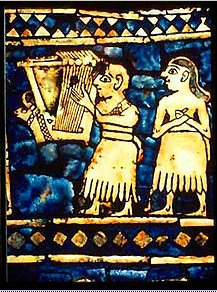
 |
39 |
 |
3 |
 |
|
Ba6-3 (210) |
Ba6-43
(250 = 432 - 182) |
Ba7-3 (254) |
|
SIRIUS
(*101) |
AL MINHAR AL ASAD (*141) |
ALKES (*145) |
|
June 30
(181 = 210 - 29) |
Aug 9
(221 = 250 - 29) |
Aug 13
(225 = 254 - 29) |
|
45 |
254 + 164 + 45 = 463:
|
26 |
 |
2 |
 |
134 |
|
Ba7-30
(281) |
Ba7-33
(284) |
|
*355 |
MANUS
CATENATA (*358) |
|
March 11 (70) |
March 14
(73) |
|
164 |
 |
12 |
 |
8 |
 |
18 |
 |
2 |
 |
|
Ba10-30 (419) |
Bb1-11 (432) |
Bb1-20 (441) |
Bb2-8
(460) |
Bb2-11 (463) |
|
*128 |
AL
MINHAR AL ASAD (*141) |
*150 |
ZOSMA
/ COXA |
GREDI |
|
July
27 (181 + 27) |
Aug 9
(221) |
Aug 18 (230) |
Sept
6 (249) |
Sept
9 (252) |
|
45 |
Like in a game of pinball One (cfr One and
Seven Hunaphu, One and Seven Death) should be picked up
and replaced at the top position again - for the
Mistle-toe nests at the top of the oak.
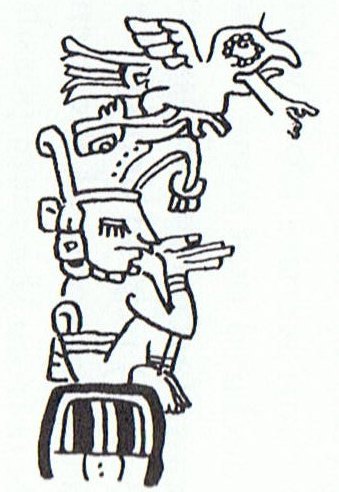
... Hercules
first appears in legend as a pastoral sacred king and,
perhaps because shepherds welcome the birth of twin lambs,
is a twin himself. His characteristics and history can be
deduced from a mass of legends, folk-customs and megalithic
monuments. He is the rain-maker of his tribe and a sort of
human thunder-storm. Legends connect him with Libya and the
Atlas Mountains; he may well have originated thereabouts in
Palaeolithic times. The priests of Egyptian Thebes, who
called him Shu, dated his origin as '17,000 years
before the reign of King Amasis'. He carries an oak-club,
because the oak provides his beasts and his people with mast
and because it attracts lightning more than any other tree.
His symbols are the acorn; the rock-dove, which nests in
oaks as well as in clefts of rocks; the mistletoe, or
Loranthus; and the serpent. All these are sexual emblems
...
In Sweden there is a Chrismas tradition which allows anyone
to kiss anybody one happens to encounter below the
mistletoe branch hanging down from above in the door frame.
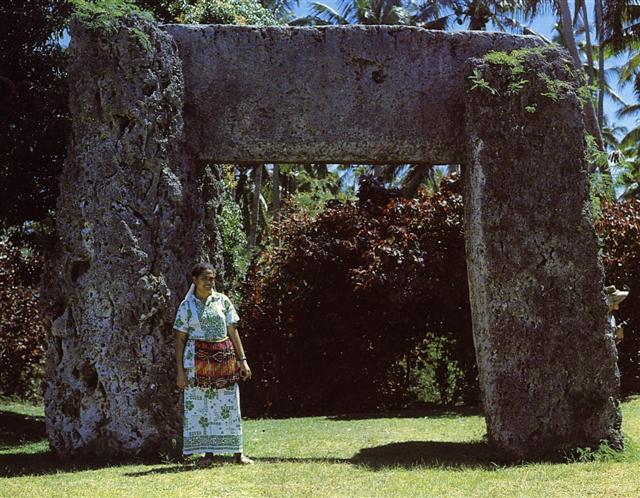
In the expression vaha mea the main idea seems to
be 'opening' (vaha), whereas in mea ke the
main idea seems to be 'different' (ké):
|
 |
 |
|
vaha
mea |
mea
ke |

|

























